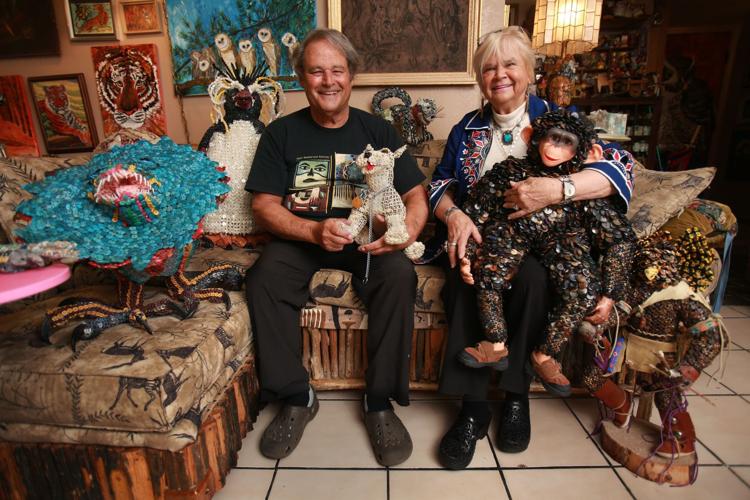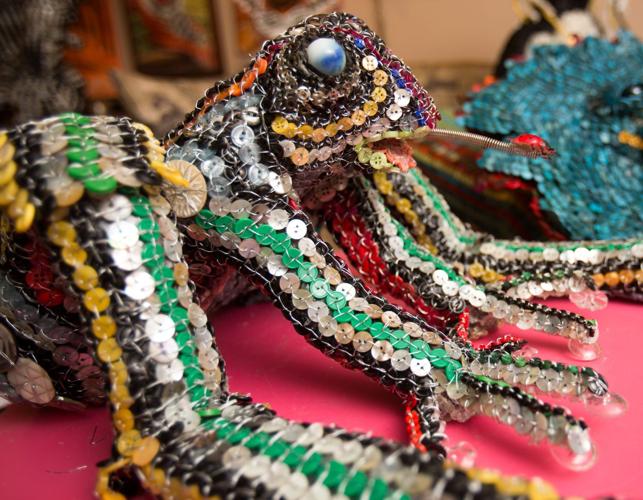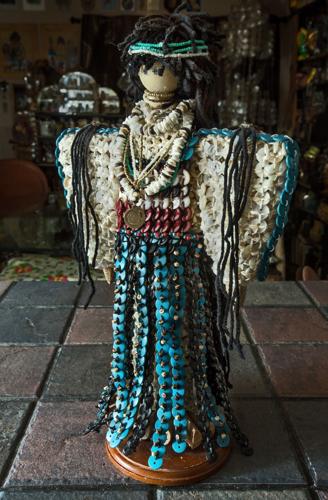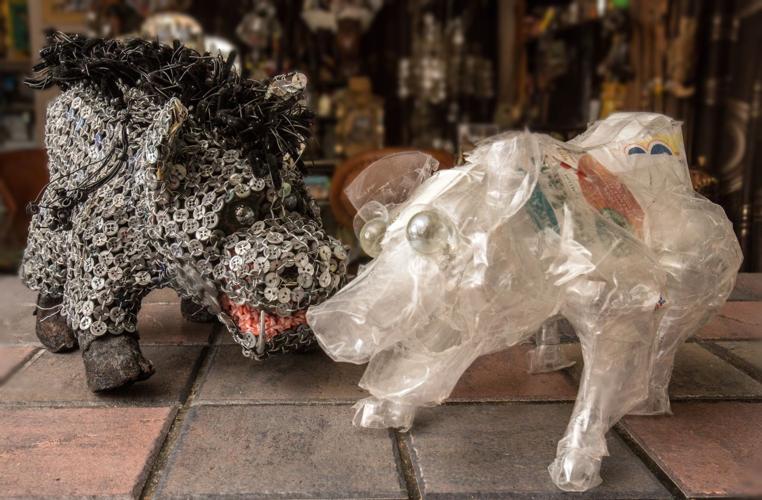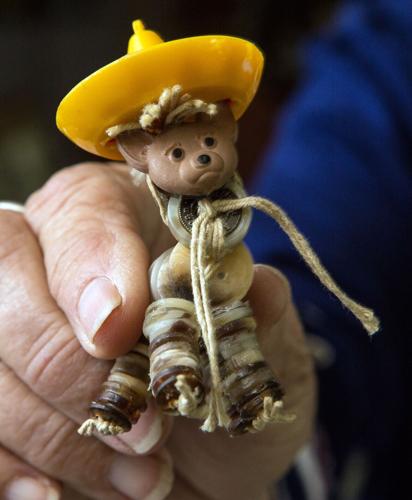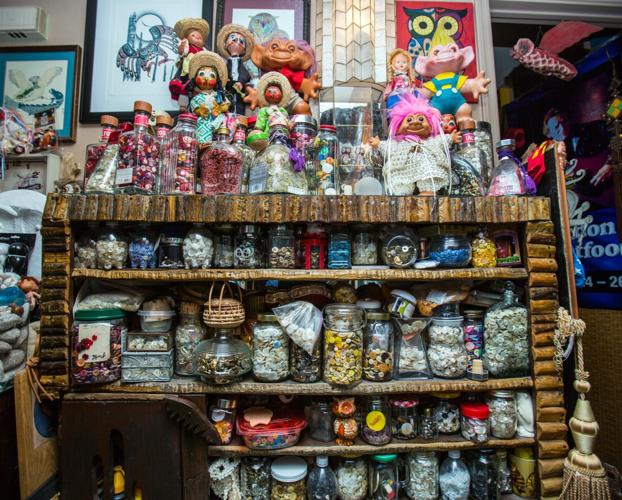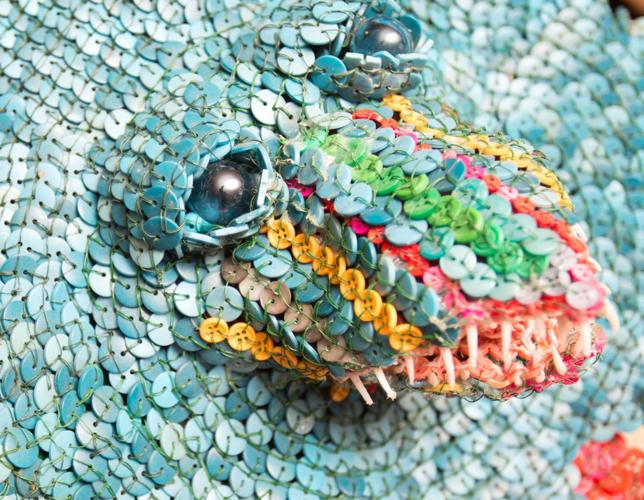Bob Tepper guzzles Ocean Spray cranberry juice.
Once, he spent days binge-eating Cheetos.
“I had orange fingers for a week,” he says, holding all 10 digits up for emphasis.
The things you do for love.
Bob, you see, is one very supportive husband. His folk-artist wife, Halina, doesn’t typically work in traditional mediums. She prefers recycling everyday household items like juice cartons and containers that hold Canadian army-sized portions of cheese puffs and ... buttons.
Especially buttons.
You could call her work fasten-ating.
She takes those little utilitarian discs and transforms them into fanciful creatures like a rockhopper penguin and a 50-pound pewter-and-gold rhino that’s on display at the International Wildlife Museum.
“Because the button is so humble, I enjoy bringing them to life,” says Halina, 75, who was born in Siberia and spent a chunk of her childhood in war-torn Europe.
Buttons have always been special to her. Her Jewish stepfather — a Polish soldier during World War II who fought against the Russians — was captured and survived only because, as a master tailor, he could mend uniforms. He regularly gifted Halina with shiny buttons and fabric swatches, which she treasured and kept tucked in a cigar box.
Resourcefulness was a way of life for Halina, whose family came to the United States in 1949. Clothes were made, not bought, and nothing was wasted or thrown out. So even though she and Bob, 73, who retired as director of sales and marketing for Guittard Chocolate Co., have raised four daughters and lived comfortably in their 50-plus years together, Halina’s continued to recycle and salvage. So much so that their two youngest grandchildren have been known to scavenge through fast-food restaurant trash cans saying, “Grandma needs this!”
She recalls a time back in the ’60s that she went poking around a spot in the desert where people had tossed broken windshields. A police officer found her and threatened to cite her for illegal dumping. She explained she was picking up, not throwing out. The same officer later bought one of Halina’s windshield wildlife paintings that she’d mounted onto reclaimed wood.
At the northeast-side home where the two have lived for 36 years, there’s not a bare patch to be found. Mostly because Bob points out any empty spaces to Halina.
The kitchen cabinets bloom with giant sunflowers, birds adorn the doors, even a bedroom floor is a mosaic masterpiece crafted from granite cemetery scraps. Halina salvaged broken shutters and turned them into shelves, pounded saguaro ribs into furniture and even patched and rehung a broken mirror, seashells glued over the offending cracks.
“The whole house is the studio,” says Halina, who used to visit and watch famed artist Ted DeGrazia work. Her first pieces, she says with a laugh, were actually children’s paint-by-the-numbers kits.
But it’s buttons that have captured her creativity these days. She uses them like fabric. She sews them together, usually with thin wire in each hole, and then spreads the button blankets over plastic-container skeletons that are covered in regular packaging tape and a skin of glued-on felt.
She and Bob love to travel — in fact, her husband will tell you, Halina keeps a suitcase packed — and know the best swap meets and antique shops to find buttons from here to Snowflake. Bob jokes that his name is actually an acronym for “Buttons On a Budget.”
Halina buys assortments and then separates them out by color. If she can’t find exactly what she needs, she’ll make her own buttons out of plastic, as she did for a kangaroo, which has a drop-open pouch and two babies tucked inside. They’re gold — the same hue as the Aleene’s Original Tacky Glue containers they’re made from.
When she can, and there’s interest, she volunteers her time teaching crafting classes. But, she doesn’t sell her work anymore. She prefers to give her art as gifts, which isn’t easy.
“When I give something away,” Halina says, “it’s like watching my kids go away.”


